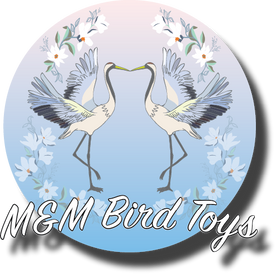The Budgerigar (Melopsittacus Undulates) is one of the most popular pet bird breeds in the world. This delightfully colorful small size parrot was first seen and kept in Europe in the 1840s. Also commonly known as a Parakeet in the USA, this small bird is easy to tame, breed and truly love!

The Light-Green Budgerigar (normal-colored)
These little parrots are able to mimic sounds including human voices and are quite intelligent. Budgies are more than smart enough to know how they are being treated and like all pets, should be handled with love, care and patience. As budgies are easy to raise and thoroughly enjoy interacting with people, with kindness and gentleness, in a short time a new pet can be right at home in any household.

The Spangled Dark-Green Budgerigar
Budgies typically live up-to (8) years in the wild. In captivity with the benefits of a safe living space, consistent quality nutritious food and lots of love from their flock mates (the owners) budgies have been known to live unto (25) years or more! To tell the sex of a budgie during the breeding season the male will have a blue cere and the female will have a brown cere. The cere is the fleshy piece right on top of the beak where the nostrils are.

The Lutino Budgerigar
Compared to other parrots budgies are surprisingly hardy but like all birds care should be taken to avoid drafts and chills. Budgies will breed regularly in commercially available nesting boxes with their typical breeding seasons beginning in the spring time. To avoid having extra budgies un-expectedly pop-up its recommended to read about their breeding activities if a pair or more is in the flock.

The Pied, Yellow-Masked, Blue Budgerigar
Here’s an easy to check table with budgie safe food and treats. Lettuce is only recommended in the smallest amounts as it can cause loose droppings and have little to no nutritional value. The beak treats and essential nutrition items are recommended to be given in small amounts. A bit of grit is important for all birds as it assists with digestion. Calcium is also an essential nutrient thats commonly provided with a cuttlebone piece. These are shells from the cuttle fish, are completely natural and easy to install in any cage.
| Vegetables | Fruits | For Essential Nutrition | Beak Treats |
| Endives | Strawberries | Hard-Boiled Egg & Cottage Cheese Mix | Millet Spray |
| Chickweed | Apples | Small Amount of Grit | Wheat Germ |
| Parsely | Oranges | Cuttlebone or other item with Calcium | Oats |
| Watercress | Tangerines | Small Sunflower-Seed Kernels | |
| Spinach | Grapes | ||
| Young Dandelions | Pears | ||
| Groundsel | Tomatoes | ||
| Aubergines | Kiwi Fruits | ||
| Green Peas | Mangoes | ||
| Carrots | Apricots | ||
| Cooked Beets | Pineapples | ||
| Sweet Potatoes | |||
| Courgettes | |||
| Curly Kale |

❤️ Budgie Love ❤️
Works Cited: Vriends, Matthew M., and Tanya M. Heming-Vriends. The Handbook of Cage and Aviary Birds. Magnet & Steel, 2014.

